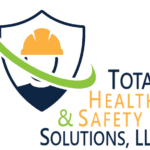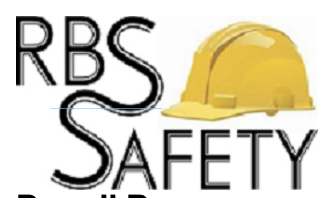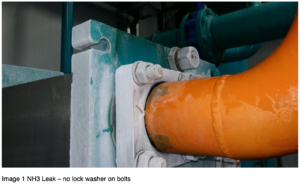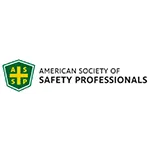SAFTENG Has
- Over 17,500 categorized unsafe acts/conditions and accident/injury photos
- Over 1,400 ppt's & doc's
- Over 3,900 technical articles on Process Safety & Occupational Safety & Health matters
- Over 400 videos
CLICK HERE to Renew your Membership
CLICK HERE for a NEW Membership
CLICK HERE to see eligibility requirements for FREE Membership
If you have any questions, please contact me

I am proud to announce that have extended our”Partners in Safety” agreement for another year (2025).
CI Members, send me an e-mail to request your FREE SAFTENG membership.














December 28, 2020
Way back in February 2016 I introduced many of you to ISA-RP12.12.03, Standard for Portable Electronic Products Suitable for Use in Class I and II, Division 2 for the first time and I received many e-mails, texts, and phone calls about those 2016 posts. Although the posts were speaking to smaller electronic devices, most notably “fitness bands”, the concept rubbed a lot of folks...
Read More
December 28, 2020
This is awesome. Cavitation has been the end of many pumps in my career and the causes of some significant LOPC events, but to see it be created and watch it in clear pipes and pumps is the way to learn. This short video should be in every operator’s training!!
…
HomeRead More »
Read More
December 26, 2020
This 2020 LOI rescinds the letter issued on July 25, 2019, to Ms. Hill, by removing the parenthetical in the second paragraph of the background section. This is an interpretation regarding a possible conflict on the minimum separation distance between aboveground liquefied petroleum gas (LPG) containers and buildings in OSHA’s 29 CFR § 1910.110 – Storage and Handling of Liquefied Petroleum Gas...
Read More
December 26, 2020
Someone requested OSHA to address the growing field of virtual reality safety and health training. Their letter constitutes OSHA’s interpretation ONLY of the requirements herein, and may not be applicable to any questions not delineated in the original correspondence. Your paraphrased questions and our responses follow.
Question: We have been told online, commercially available, training tools meet...
Read More
December 26, 2020
OSHA’s latest position on testing electrical gloves is very enlightening! For example, even if the gloves are simply electrically tested and then returned to storage, OSHA regards the gloves as being issued for use! This is a new one on me, but in their latest LOI they discuss the following scenario:
gloves got tested on January 1, 2020, but not issued until October 1, 2020
must they...
Read More
December 26, 2020
No, the employer is not required to include findings and recommendations from the facility siting study report in the same PHA worksheet or recommendations log to comply with 29 CFR § 1910.119(e)(5) and 29 CFR § 1910.119(e)(7).
…
HomeRead More »
Read More
December 15, 2020
As I always say, we can not discuss MOC and PSSR as if they are separate systems… they go hand in hand 99% of the time. That is what I want to discuss: how a PSSR requirement defines how we manage our MOC system. We have discussed many times there are ONLY TWO (2) occasions where OSHA and EPA require a PSSR to be conducted:
new facilities, and
modified facilities when the modification...
Read More
December 8, 2020
At approximately 4:00 a.m. on March 29, 2020, an employee was installing a blind on a flange on a reactor. Then, the probe stem fell inside of the reactor, and the employee tried to fish it out. Using a ladder, the employee went inside the reactor that was NOT cleared for entry because the reactor still contained vinyl chlorine. Halfway down the ladder, the employee became dizzy and fell to the bottom...
Read More
December 8, 2020
Buckle up buttercup… the political winds in DC are shifting and with this comes “opportunities” – man how I hate politics! For those of you who may have thought that the RMP Amendments from the final year of the President Obama administration were long gone – THINK AGAIN! On Friday (12/4/20), the U.S. Court of Appeals – D.C. Circuit granted a request...
Read More
December 4, 2020
On the plate heat exchanger, a machined nut backed off on the flange bolt that holds the gasket in place. This caused part of the gasket to blow out resulting in ammonia (NH3) to leak into the machine room. The machinery room alarm was activated. Upon inspection, the following failures were found:
…
HomeRead More »
Read More
December 2, 2020
The word “potential” is defined by Merriam-Webster as:
existing in possibility : capable of development into actuality
In OSHA’s PRCS standards (both 1910 and 1926 versions) it uses the word “potential” when talking about atmospheric hazards; especially when we are talking about RECLASSIFYING a PRCS to a NON-PRCS using 1910.146(c)(7) or 1926.1203(g)
1926.1203(g)(1)...
Read More
December 1, 2020
This draft guidance document is intended to clarify to the public regarding existing pipeline safety standards. The contents of this document do not have the force and effect of law and are not meant to bind the public in any way, but pipeline operators must comply with the underlying safety standards.
(emphasis by me)
…
HomeRead More »
Read More





















